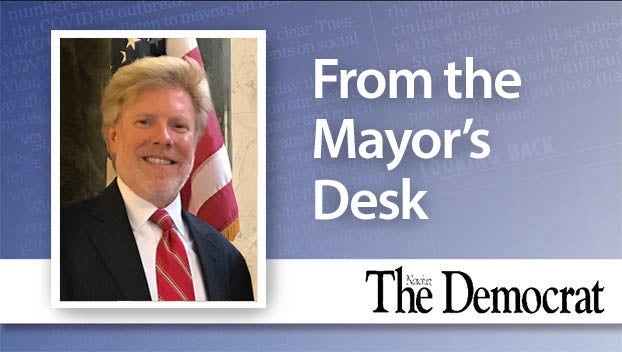Issue closest to lawmakers’ hearts is on its way
Published 7:21 pm Friday, February 12, 2021
|
Getting your Trinity Audio player ready...
|
A smile can be seen behind Rep. Jim Beckett’s Ole Miss facemask when he is asked if his colleagues are already coming to him to talk about the redrawing of their legislative districts.
After all, nothing is more important to most legislators than having a district where they can be re-elected.
“A day doesn’t go by when somebody doesn’t want to share his or her opinion,” said Beckett, a Republican from Bruce. “My response is we don’t have the (Census) numbers yet. I tell them they will be given an opportunity…That is my intention to talk with the members about their districts.”
Beckett, though, stressed that he is making no promises that House members will get all they want in the process of redrawing the 122 House districts to match population shifts found by the 2020 Census.
Beckett, a small-town attorney who is in his fourth term in the House, was tabbed by Speaker Philip Gunn to head up the all-important-to-legislators task of redistricting.
On the Senate side, Lt. Gov. Delbert Hosemann is playing his cards close to his vest. He has yet to name a chair of the Senate redistricting panel.
Hosemann said he does not want to make appointments to the redistricting committee until he sees the Census numbers to ascertain what areas of the state will be the most impacted by population changes.
The states were scheduled to receive the numbers from the U.S. Census Bureau by the end of 2020 to begin the process of redrawing the district, which must be done every 10 years to ensure the principles of “one person, one vote” or equal representation. The COVID-19 pandemic has delayed the receipt of those numbers. The Census data is now slated to be delivered to the states no earlier than July 30.
Fortunately for Mississippi, the Legislature has plenty of time to complete its redistricting process since state legislative elections will not be held until 2023. The Legislature most likely will redraw its districts in the 2022 session.
Ideally, Beckett said, the redrawing of the four U.S. congressional districts could be completed this fall during a one-day special session. For that to occur, though, the state would have to receive the population numbers and Hosemann would need to appoint a chair and members of the committee in a timely fashion.
Beckett said that would be ideal since the congressional elections will be held in 2022, and qualifying to run for those offices would begin in January.
The Census is not expected to result in Mississippi gaining or losing a member of the U.S. House. But, most likely, there will be some reconfiguring based on growth in certain areas of the state and population declines in other areas. But the end result most likely will be the maintaining of one African American majority district, concentrated on the Delta and including a large slice of the Jackson metro area.
As far as the Mississippi Legislature, there are currently 15 majority African American districts in the 52-member Senate and 42 in the 122-member House. The state has a Black population of about 38% based on past Census data.
Rep. Ed Blackmon, D-Canton, who has been a member of the House since 1980 and played a key role in redistricting battles that led to increases in the number of African Americans in the Legislature, said under court precedent it would be difficult for the number of Black majority districts to be reduced in the redistricting effort.
But in reality, Blackmon said, the Republican majority has no intention of reducing the number of Black majority districts.
“Having Blacks packed into districts serves the purposes of the Republican majority,” he said. In Mississippi, most African Americans vote Democratic and most whites vote Republican. By “packing” African Americans in districts, it limits their influence in other districts, making it easier for Republican candidates to prevail.
In 2000, when Democrats controlled the House, there were 13 House districts drawn with significant but not dominant African American influence – a Black population of more than 35% but less than a majority. During the last redistricting, after Republicans had wrestled control, that number dropped to two districts with a Black population of more than 35% but less than a majority. In the Senate, the change was even more pronounced, going from 11 districts with a Black population of more than 35% but less than a majority in 2000 to three after the 2010 Census.
At one time, as the vestiges of Jim Crow laws designed to keep African Americans from voting were more pronounced, Blackmon said it was important to construct Black super majority districts. But with African Americans now more likely to exercise their right to vote, Blackmon said the pronounced “packing” can be used to limit the influence of Black voters.
Bobby Harrison is Mississippi Today’s senior Capitol reporter.



